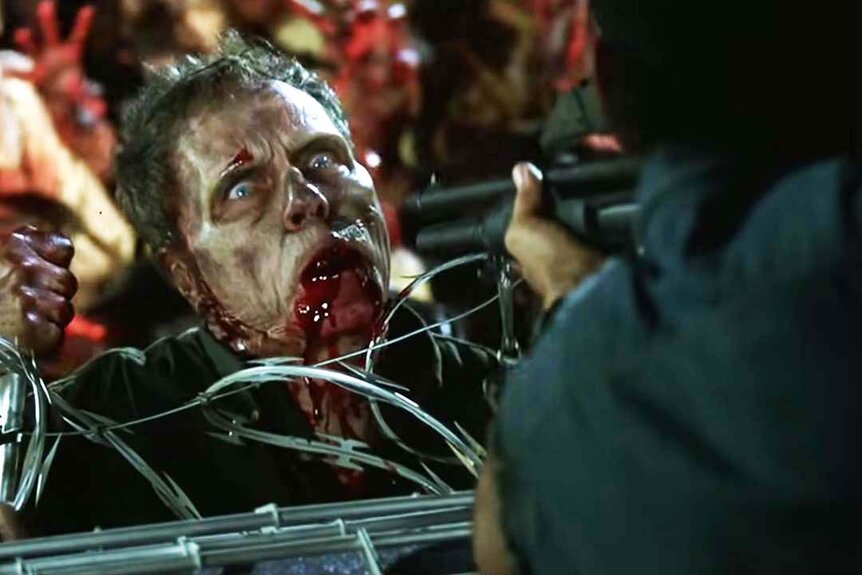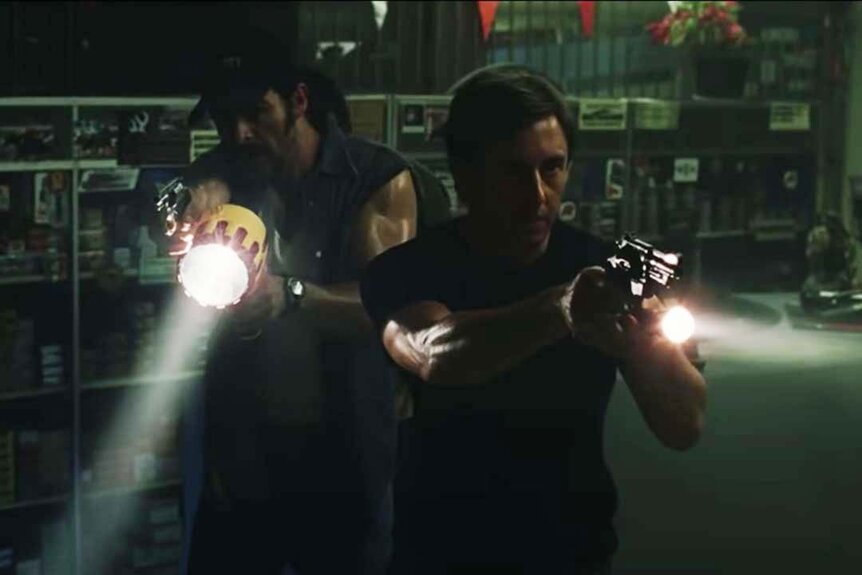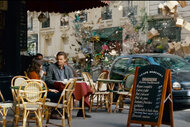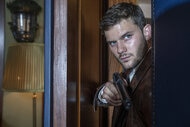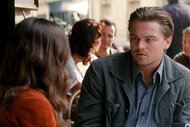Create a free profile to get unlimited access to exclusive videos, sweepstakes, and more!
Dawn of the Dead : The Pre-DC Zack Snyder/James Gunn Crossover
The remake of Dawn of the Dead changed the careers of both Zack Snyder and James Gunn.
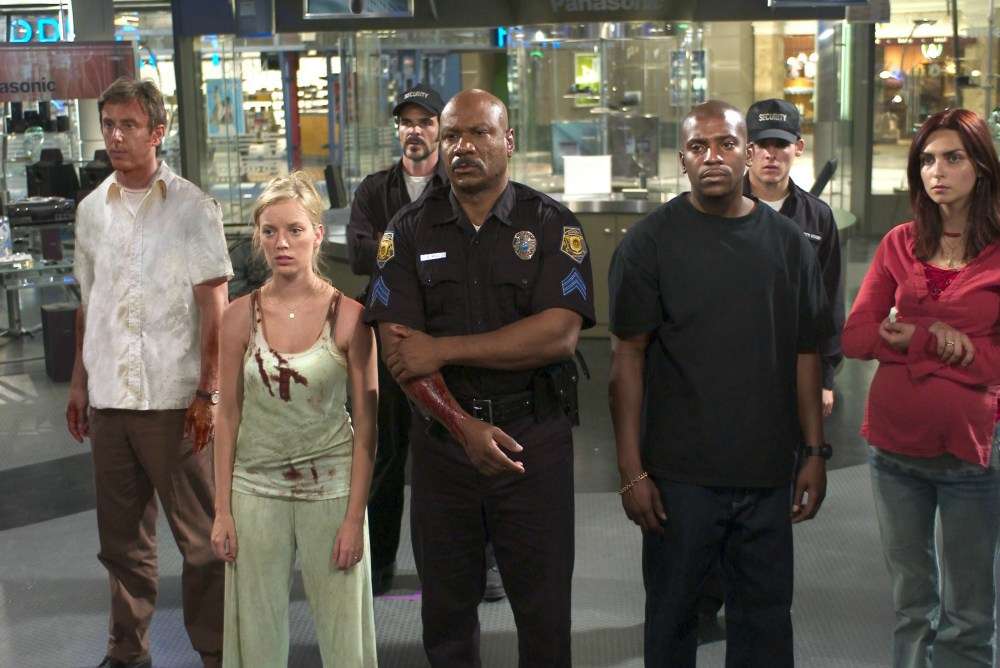
Looking back at the arc of zombie cinema, the very early 2000s ended up being a major pivot point for the sub genre. While zombie films never went away, as a whole, they were lumbering along at the time, with titles coming out in quantity but not often with much quality. A steady stream of D-level zombie flicks were made for direct-to-video, but none of them seriously made much impact until Danny Boyle's 28 Days Later (2002). And while that movie technically isn't a zombie film (the term is never referenced), and is more in line with a virus infection movie that mutates humans into mindless zombie-esque creatures, zombie fans claimed it as one of their own. It achieved both critical acclaim and box office success, which proved there was an enthusiastic audience ready to show up for intelligent reimaginings within the genre that George A. Romero essentially created with Night of the Living Dead (1968).
Then in 2004 came director Zack Snyder and screenwriter James Gunn with their reworking of Dawn of the Dead (streaming now on Peacock). It not only transformed the careers of both filmmakers, but it ushered in a new benchmark of quality for the zombie genre. On a tight $26 million budget, they brought to life a gritty, sometimes witty, $100 million hit. And despite taking the title of Romero's 1978 horror film, their version of Dawn of the Dead borrowed minimally from the original film and mostly carved its own creative path.
Revisiting Dawn of the Dead, Now Streaming on Peacock
The film established Snyder as a new directing talent for Hollywood to pay attention to, and Gunn's screenplay proved that he'd matured well beyond his early Troma Entertainment writing days and amplified his name as a new voice in horror storytelling. After their collaboration, they both moved forward on different career paths, but ironically have had many milestones that parallel one another. In particular, making superhero films has taken up large chunks of their resumes, with Snyder going the DC Comics route first with Watchmen and then his Justice League films. And Gunn did his own alt superhero film with Super, and then became a major voice at Marvel Studios with his Guardians of the Galaxy trilogy.
RELATED: The first 10 minutes of Zack Snyder's 'Dawn of the Dead' are perfect horror
After spending a decade playing in the DC Comics sandbox, with its own highs and lows, Snyder exited the DC Extended Universe (DCEU) to return to zombie storytelling with Netflix's Army of the Dead as well as his original sci-fi franchise, Rebel Moon, out later this year. Meanwhile, the vacant slot overseeing DC's library of superhero characters was then filled by Gunn and his producing partner, Peter Safran, who are now co-chairmen and co-CEOs of DC Studios.
Aside from their obvious love of the zombie genre and horror storytelling, Dawn of the Dead reflects many of Snyder and Gunn's signature creative moves, which they've carried with them into subsequent projects. From a storytelling perspective, both Snyder and Gunn love telling stories about disparate characters who have to come together in dysfunctional found-families. Dawn of the Dead scratches that itch right from the start, as the zombie apocalypse creates horrific situations for the characters who will go on to become the primary ensemble of the movie. In particular, nurse Ana Clark (Sarah Polley) loses her husband early, and connects with other survivors who take shelter in a mall, including cop Kenneth Hall (Ving Rhames), salesman Michael (Jake Weber), and Andre (Mekhi Phifer) and his pregnant wife, Luda (Inna Korobkina). The disagreements are many, but as they face attacks and life threatening decisions, they come to grips with how to deal with one another. It's a common dynamic explored by both filmmakers, like in Snyder's Dawn of Justice and Army of the Dead. Gunn also revisits that story structure often in the Guardians movies, Peacemaker series, and The Suicide Squad.
Visually, Snyder and Gunn both love them some gore. Dawn of the Dead pulls no punches when it comes to taking down zombies in graphic ways, or framing action scenes with gritty realism. Dawn also had the two men agreeing on reshaping the way zombies move and attack, creating scenarios where they would congregate outside the mall complex and eventually attack in hordes. Finding new ways to invigorate the zombie tropes is a big reason why Dawn of the Dead works so well. It's not resting on its laurels by following what came before. It makes new rules and then reveals them in ways that surprise and impress.
Snyder took the success of that approach with him as he continued to direct. Today, he's got a reputation for creating visuals that are epic in scale and scope. As he did with Dawn, Snyder isn't afraid to use visual effects to achieve the scale he wants, and to painstakingly translate his storyboard concepts to the screen. Audiences can see it all on the screen from Sucker Punch to Watchmen, and even with the visuals he's revealed for his own space opera, Rebel Moon.
After Dawn, Gunn made more practical, indie films where in camera effects remained his primary preference. But his success with the Guardians of the Galaxy trilogy has expanded Gunn's world-building and use of visual effects to add scale and scope to his stories.
RELATED: Ranking every Zack Snyder movie: 'Dawn of the Dead,' 'The Snyder Cut,' '300,' 'Sucker Punch' & more
Last but not least, Dawn also remains so memorable because of the character work achieved between all the violence and zombies. Every character makes an impact, and the audience is allowed to get to know them so it matters when they succeed or fail in the rest of the film. We care when their ultimate fates remain unknown and leave the audience with an emotional gut punch to process as the credits role.
Having audiences bond with his various ensembles of characters has remained a formula feature in Gunn's films, as he continues to craft flawed anti-heroes that become their better selves in the right group dynamics. From the "a-holes" of the Guardians of the Galaxy to the reformed "villains" of The Suicide Squad and Peacemaker.
With Snyder, he's always been more interested in exposing the darker sides of humans, be they heroes or villains. In his DC Comics films, Watchman is the ultimate exploration of what being a superhero means, and how flawed that title can be in the wrong hands. He also mined the darker spaces of superheroes like Batman and Superman.There's a connection there that goes all the way back to the darker sides of characters like Michael Shaunessy (Weber) and Steve Markus (Ty Burrell) in Dawn.
To find your own through lines from Dawn of the Dead to the rest of Zack Snyder and James Gunn's filmographies, be sure to watch Dawn of the Dead, now streaming on Peacock.
